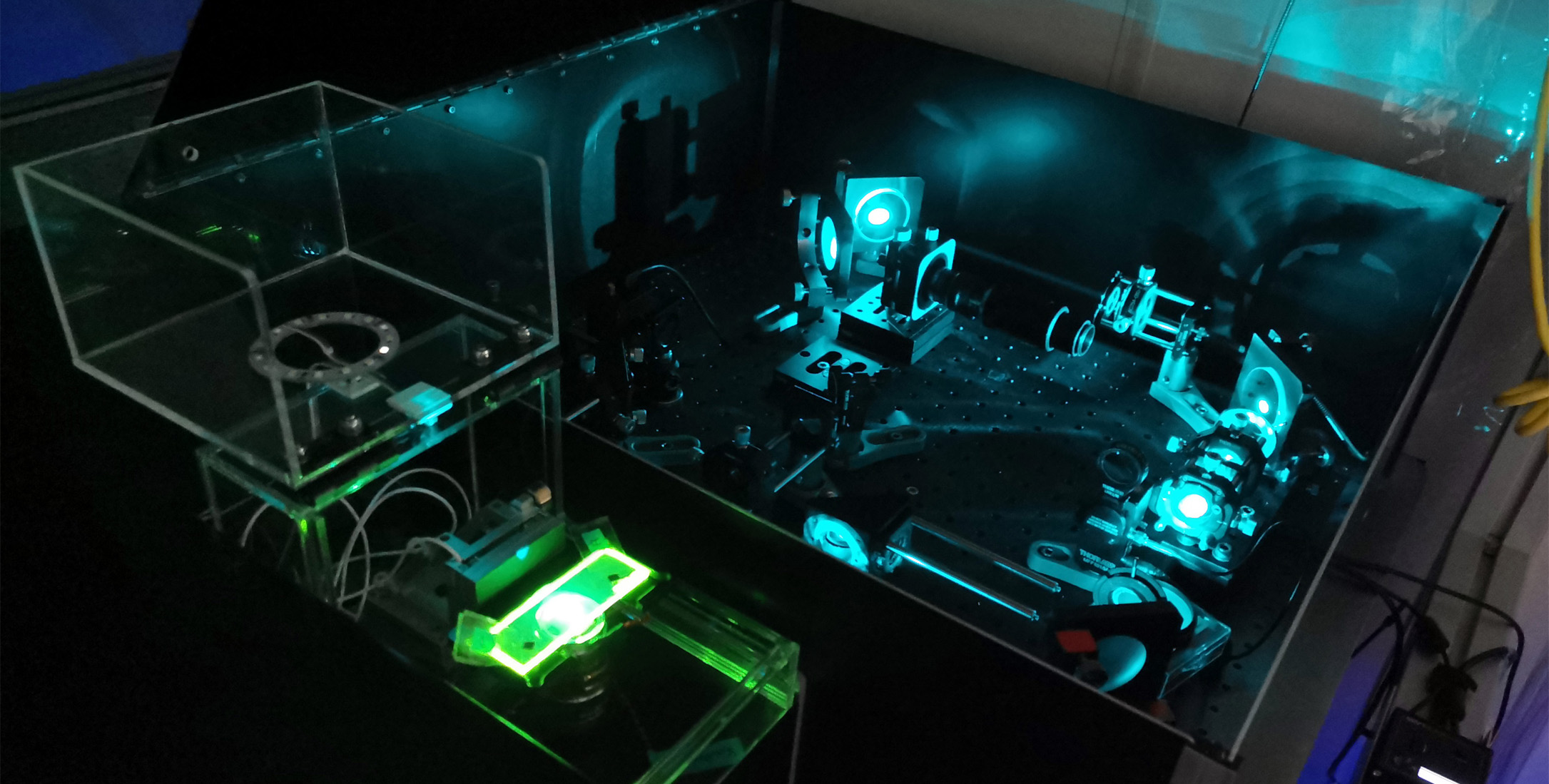Ganzinger Lab - K2 TIRF microscope
Commercially available fluorescence microscopes that are compatible with single-molecule experiments are often very expensive and lack flexibility. In recent years, a number of open-source projects emerged within the (single-molecule) fluorescence microscopy community, facilitating the planning and setting up of a custom microscope.
These projects can be combined with each other or with commercial solutions, depending on the experimental requirements, the infrastructure around the lab (workshops, instrument developers), the available budget and workforce.
In our multicolor single-molecule TIRF microscope 'K2' we opt for commercial solutions for parts which don't need the maximum flexibility, and are cheaper or much faster obtained than a comparable custom-made solution.
Whenever available, we base our custom-made solutions on existing open-source projects to save time and costs in the instrument development process.
More information, including detailed step-by-step build instructions are available in our publication:
C. Niederauer, M. Seynen, J. Zomerdijk, M. Kamp, K. A. Ganzinger,
The K2: Open-source simultaneous triple-color TIRF microscope for live-cell and single-molecule imaging (HardwareX, 2023)
In our multicolor single-molecule TIRF microscope 'K2' we opt for commercial solutions for parts which don't need the maximum flexibility, and are cheaper or much faster obtained than a comparable custom-made solution.
Whenever available, we base our custom-made solutions on existing open-source projects to save time and costs in the instrument development process.
More information, including detailed step-by-step build instructions are available in our publication:
C. Niederauer, M. Seynen, J. Zomerdijk, M. Kamp, K. A. Ganzinger,
The K2: Open-source simultaneous triple-color TIRF microscope for live-cell and single-molecule imaging (HardwareX, 2023)
Our single-molecule TIRF microscope K2 has no conventional microscope body, instead it is based on the miCube project.
This allows for a much smaller footprint and budget, while still providing the required mechanical stability.
For the laser excitation we chose a commercial solution for the hardware (Cobolt C-Flex), which provides reasonable flexbility in terms of adding and changing laser frequencies, and developed a custom-made laser trigger box.
In order to record images simultaneously at three different optical wavelengths, we included a self-built emission image splitter in the emission pathway and combined it with a 60x magnification objective (Nikon Apo TIRF 60x 1.49NA and a 2048-by-2048px sCMOS camera (Teledyne Photometrics Prime BSI) to retain a big field of view.
Further additions to the setup include:
For the laser excitation we chose a commercial solution for the hardware (Cobolt C-Flex), which provides reasonable flexbility in terms of adding and changing laser frequencies, and developed a custom-made laser trigger box.
In order to record images simultaneously at three different optical wavelengths, we included a self-built emission image splitter in the emission pathway and combined it with a 60x magnification objective (Nikon Apo TIRF 60x 1.49NA and a 2048-by-2048px sCMOS camera (Teledyne Photometrics Prime BSI) to retain a big field of view.
Further additions to the setup include:
- Flip-in lens in the excitation path for photobleaching experiments (FRAP)
- qgFocus: our implementation of the pgFocus focus stabilization system
- Beamshaping device (piShaper) for flat-top illumination over a big field of view (see Stehr, Stein et al.)
- Sample stage: Three-axis piezo stick-slip positioner (Smaract SLS5252) wih nanometer resolution and 30mm travel range
- Objective-heater and plexiglass housing for live-cell imaging

